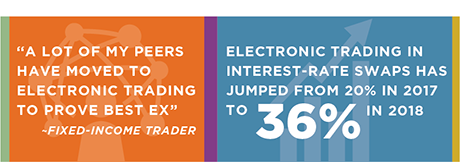
We are now just over one year into the great MiFID II trading transformation. Execution has been unbundled from research, requiring asset managers to focus more on execution quality and brokers, to ensure they have a competitive stand-alone trading business. The lessons of MiFID I informed us to expect an increase in electronic trading for newly covered asset classes, and preliminary data is already showing the beginning of this trend.
Some parts of MiFID II are catalyzing new business models to help traders navigate this new landscape, while other rules are leading to some unintended consequences. The markets have survived this first transitional year of MiFID II, but the dust has by no means settled. Competitive dynamics will continue to drive market structure, as traders experiment with new tools, analytics and business models.
MethodologyQuantitative data about Europe presented in this paper has been sourced from various Greenwich Associates research studies and from publicly available sources. Market Share Reporter data from Refinitiv was used to source much of the equity data. In addition, Greenwich Associates interviewed 11 buy-side traders in Europe, asking them a series of qualitative questions about the impacts of MiFID II on their trading process.

